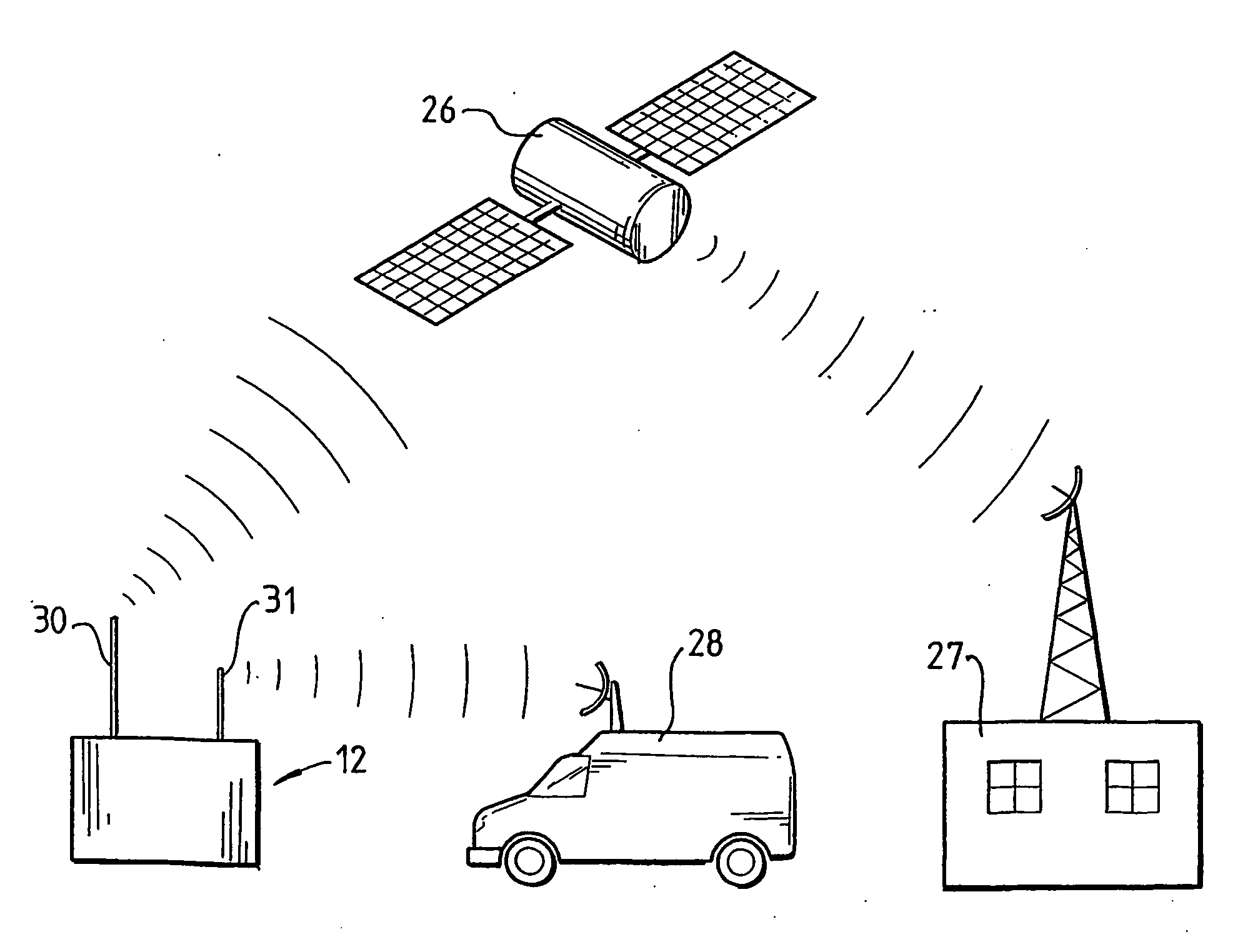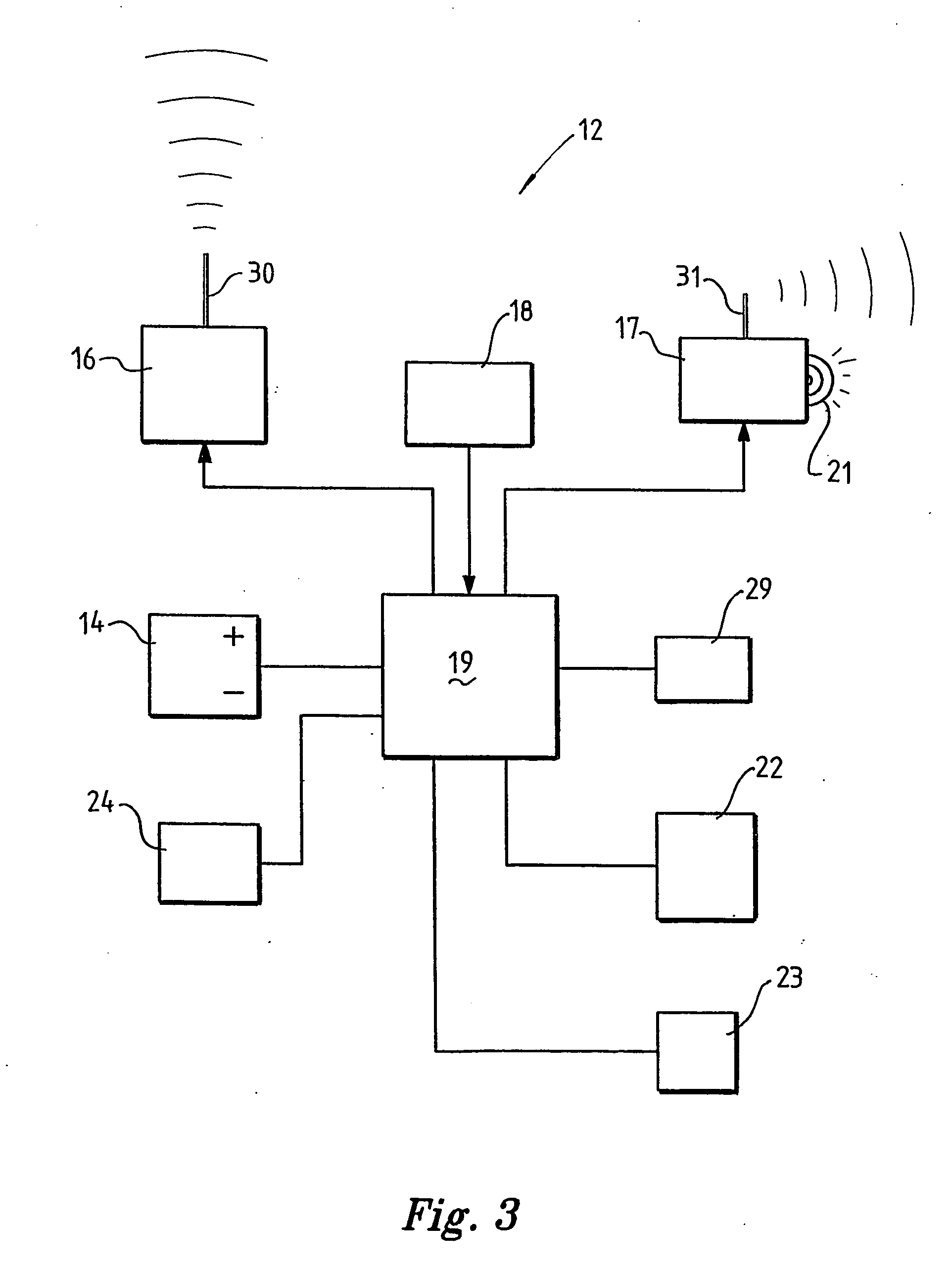Vehicle automatic emergency response system
a technology of automatic emergency response and vehicle, which is applied in the direction of traffic control system, alarm, electric signalling details, etc., can solve the problems of system, inability to be used inability to provide coverage in remote areas or areas where the mobile phone network has minimal coverage,
- Summary
- Abstract
- Description
- Claims
- Application Information
AI Technical Summary
Benefits of technology
Problems solved by technology
Method used
Image
Examples
Embodiment Construction
[0029] Referring to the drawings, FIGS. 1 to 3 schematic illustrate an embodiment of the invention installed in a motor vehicle. The system 12 is preferably mounted in a relatively protected area of the vehicle, such as beneath a rear parcel shelf or adjacent a forward crash pad. The system 12 incorporates the in-vehicle components shown more particularly in the block diagram of FIG. 3, and includes an in-built power supply battery 14, an alarm signal transmitter 16, a radio beacon transmitter 17, a GPS unit 18 and control circuitry 19. The system of this embodiment may also include a strobe lamp 21 for producing light pulses.
[0030] The vehicle in which the system is installed includes an accelerometer 22 which is used to initiate operation of the vehicle air bag system in response to an accident or impact. Although only one accelerometer 22 is illustrated, it will be understood that vehicles in which the system is installed may have any number of accelerometers for a plurality of ...
PUM
 Login to View More
Login to View More Abstract
Description
Claims
Application Information
 Login to View More
Login to View More - R&D
- Intellectual Property
- Life Sciences
- Materials
- Tech Scout
- Unparalleled Data Quality
- Higher Quality Content
- 60% Fewer Hallucinations
Browse by: Latest US Patents, China's latest patents, Technical Efficacy Thesaurus, Application Domain, Technology Topic, Popular Technical Reports.
© 2025 PatSnap. All rights reserved.Legal|Privacy policy|Modern Slavery Act Transparency Statement|Sitemap|About US| Contact US: help@patsnap.com



